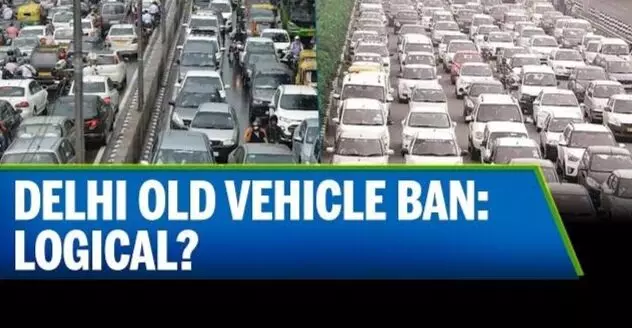Delhi’s Vehicle Ban: A Bold Step Forward or Regulatory Overreach?

Delhi’s latest assault on vehicular pollution represents perhaps the most comprehensive and controversial environmental policy intervention in the city’s modern history. The Delhi government’s multi-pronged approach includes limiting gasoline and diesel-powered cars per family, banning fuel-guzzling motorbikes, and restricting entry to only Compliant vehicles, CNG cars, and electric vehicles. While the environmental urgency is undeniable, the economic and social implications of these sweeping measures demand careful scrutiny.
The Pollution Crisis: Beyond Numbers
Delhi’s air quality crisis has transcended statistical abstractions to become a lived reality for over 30 million residents. The city consistently ranks among the world’s most polluted capitals, with particulate matter levels regularly exceeding WHO guidelines by dangerous margins. Vehicular emissions contribute significantly to this toxic cocktail, making transport sector reforms not just desirable but essential for public health.
The government’s Air Pollution Mitigation Plan 2025 represents recognition that incremental measures have failed. Previous attempts at odd-even schemes and temporary restrictions proved inadequate against the scale of the challenge. The current policy framework acknowledges that only structural transformation of Delhi’s mobility ecosystem can deliver meaningful results.
The Policy Framework: Ambitious and Comprehensive
The government’s approach is notably comprehensive, targeting multiple vehicle categories simultaneously. New CNG auto-rickshaw registrations will be banned from August 15, 2025, with permits transitioning exclusively to electric alternatives. Private car purchases are regulated through a quota system requiring every third car in a household to be electric. Most significantly, petrol two-wheeler registrations face prohibition from August 2026.
This multi-tiered approach demonstrates sophisticated policy thinking. Rather than blanket bans, the government has created transition timelines that theoretically allow market adaptation while maintaining pressure for change. The focus on two-wheelers is particularly astute, given their numerical dominance in Delhi’s traffic composition and their disproportionate contribution to pollution when considered collectively.
Economic Implications: Winners and Losers
The policy’s economic ramifications extend far beyond individual vehicle owners. Delhi’s automotive ecosystem—encompassing dealers, mechanics, fuel retailers, and ancillary services—faces unprecedented disruption. Traditional automotive businesses must either adapt or face obsolescence, creating both opportunities and vulnerabilities.
Electric vehicle manufacturers and charging infrastructure providers stand to benefit enormously. However, the policy’s success depends critically on whether EV supply chains can scale rapidly enough to meet artificially stimulated demand. Supply shortages could create market distortions, potentially driving up prices and creating black market opportunities.
The ban on fuel supply to vehicles over 10 years (diesel) and 15 years (petrol) from July 2025 particularly impacts lower-income residents who rely on older, more affordable vehicles. This aspect of the policy risks creating mobility inequality, where environmental goals are achieved at the expense of social equity.
Implementation Challenges: Theory Meets Reality
The policy’s ambitious scope raises serious implementation concerns. Delhi’s charging infrastructure remains woefully inadequate for supporting mass EV adoption. Range anxiety, charging times, and infrastructure reliability continue to deter potential EV buyers. The government’s timeline assumes these constraints will resolve themselves, a potentially dangerous assumption.
Enforcement mechanisms also remain unclear. How will authorities monitor household car quotas? What prevents residents from registering vehicles in neighboring states? The policy’s success requires robust administrative systems that Delhi’s bureaucracy may struggle to deliver effectively.
Border management presents another challenge. Restricting entry to BS-VI, CNG, and electric vehicles from November 2025 requires sophisticated monitoring systems across multiple entry points. The potential for corruption and selective enforcement looms large.
The Equity Question: Environmental Justice or Elite Environmentalism?
Perhaps the policy’s most troubling aspect is its regressive impact on different income groups. Wealthy households can easily comply with EV mandates, viewing them as lifestyle upgrades rather than hardships. Middle-class families face difficult choices between mobility and financial strain. Lower-income residents, dependent on older vehicles and two-wheelers for livelihood, bear disproportionate burdens.
The policy lacks adequate provisions for economic transition support. Where are the subsidies for auto-rickshaw drivers forced to switch to electric vehicles? What assistance exists for mechanics specializing in conventional engines? Environmental policies that ignore social justice concerns risk creating new forms of inequality while solving old problems.
Learning from Global Experiences
International precedents offer mixed lessons. Norway’s EV success relied heavily on generous subsidies and tax incentives that made electric vehicles financially attractive. China’s aggressive EV push was accompanied by massive infrastructure investments and manufacturing capacity building. London’s congestion charging evolved gradually, allowing market adaptation.
Delhi’s approach lacks the financial resources that enabled these international successes. The policy relies primarily on regulatory coercion rather than economic incentives, a strategy that may prove less effective and more socially disruptive.
The Path Forward: Recommendations for Reform
The government should consider several modifications to enhance policy effectiveness while reducing social disruption. First, extend implementation timelines to allow better market preparation and infrastructure development. Second, introduce comprehensive subsidy programs for affected low-income groups. Third, establish robust monitoring systems to prevent circumvention and ensure fair enforcement.
Additionally, the policy should incorporate sunset clauses and regular review mechanisms. Environmental policies must remain adaptive to changing circumstances and technological developments. Rigid adherence to predetermined timelines risks policy failure when ground realities don’t align with bureaucratic assumptions.
Balancing Urgency with Pragmatism
Delhi’s vehicle ban represents a necessary but imperfect response to an environmental crisis. While the policy’s environmental objectives are laudable, its implementation approach raises serious concerns about equity, feasibility, and social disruption. The government’s challenge lies in maintaining environmental ambition while ensuring that the transition doesn’t leave vulnerable populations behind.
Success will require more than regulatory pronouncements. It demands massive infrastructure investments, comprehensive support systems, and adaptive management approaches. Delhi’s residents deserve both cleaner air and equitable transition policies. The government’s ability to deliver both will determine whether this bold experiment becomes a model for sustainable urban mobility or a cautionary tale about good intentions poorly executed.
The stakes could not be higher. Delhi’s children deserve to breathe clean air, but they also deserve a society that doesn’t sacrifice equity for environmental goals. The challenge now is making this ambitious policy work for everyone, not just those privileged enough to afford the transition.
